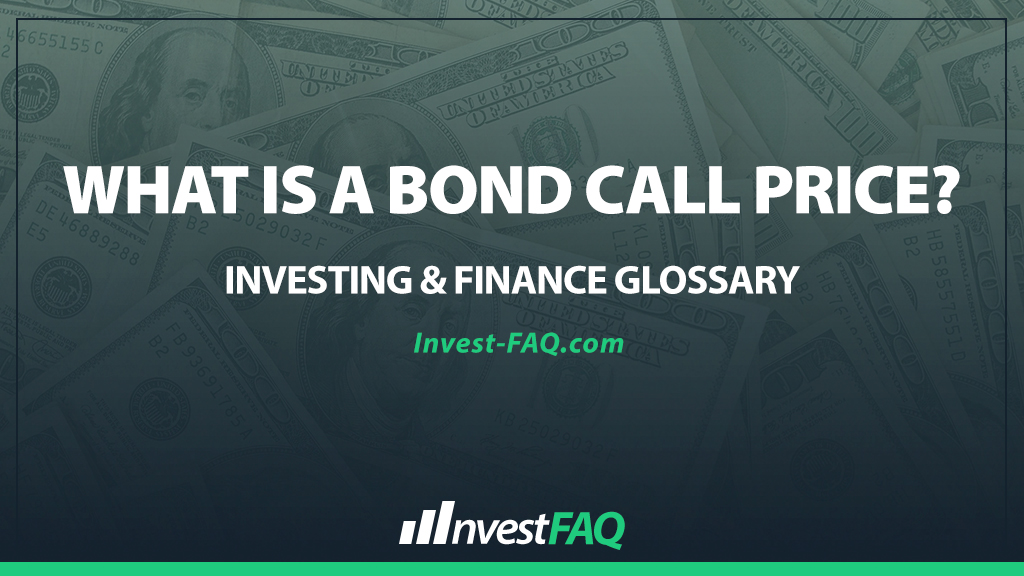
Bond Call Price
Contents
A bond call price is the price at which a bond issuer can redeem a bond before its maturity date, as specified in the bond’s terms. This feature allows the issuer to retire the debt early, usually when interest rates have fallen, enabling them to refinance the debt at a lower cost.
In the business realm, the call feature is a strategic tool for debt management, particularly for corporate and government bond issuers.
It provides flexibility to adjust to changing financial conditions by refinancing debt when it becomes beneficial to do so, such as in a declining interest rate environment.
However, for investors, callable bonds carry reinvestment risk, as bonds may be called away in low-interest-rate scenarios, forcing them to reinvest at lower prevailing rates.
Example of a Bond Call Price
Imagine “Green Energy Corp.” issues a 10-year callable bond with a face value of $1,000,000 and an annual coupon rate of 5%. The bond includes a call feature allowing the issuer to call the bond at a price of 102% of the face value after 5 years.
Five years later, with interest rates now lower, Green Energy Corp. decides to call the entire issue. The call price would be:
$1,000,000 (face value) * 102% = $1,020,000
In its accounting records, Green Energy Corp. would record the following when the bond is called:
Bond Payable (Liability): Decrease by $1,000,000, reflecting the retirement of the debt.
Cash (Asset): Decrease by $1,020,000, the amount paid to bondholders.
Loss on Bond Redemption (Expense): $20,000, representing the premium paid over the face value to call the bonds.
By calling the bonds, Green Energy Corp. takes advantage of lower interest rates to reduce its future interest expenses.
The call price of 102% means the company pays a premium over the bond’s face value, which is an immediate financial cost but can lead to long-term savings on interest payments.
This transaction impacts the company’s financial statements by reducing liabilities and cash while also incurring a loss from the premium paid, which affects the company’s net income in the period the bonds are called.
Significance for Investing & Finance
The concept of a bond call price holds significant importance in accounting for several reasons:
Debt Management: It allows issuers to proactively manage their debt portfolio, taking advantage of favorable market conditions to reduce interest costs.
Financial Statement Impact: Early redemption of bonds affects several line items in financial statements, including liabilities, cash, and expenses, which in turn impacts the issuer’s financial ratios and overall financial health.
Investor Considerations: The call feature and price are critical for investors in assessing the potential return and risk associated with callable bonds, influencing investment decisions.
Strategic Financial Planning: For issuers, understanding and strategically exercising call options is a part of effective financial planning and capital structure management, potentially leading to a more favorable cost of capital over time.
In summary, a bond call price is a critical element in the bond market, affecting both issuers and investors.
It plays a pivotal role in debt management strategies, financial reporting, and investment analysis, reflecting the dynamic nature of financial markets and the ongoing balancing act between risk and return.
FAQ
What determines the bond call price set by an issuer?
The bond call price is typically predetermined at the bond’s issuance and is influenced by factors such as the current interest rate environment, the issuer’s creditworthiness, and market conditions, aiming to make the call option appealing to investors while providing refinancing flexibility to the issuer.
How does a decrease in market interest rates affect an issuer’s decision to use the call option on a bond?
A decrease in market interest rates makes calling a bond more attractive to the issuer, as it allows them to refinance the debt at lower interest rates, reducing future interest expenses by redeeming bonds with higher coupon rates at the predetermined call price.
Can investors predict when their bonds might be called based on the call price?
While investors can assess the likelihood of their bonds being called by monitoring market interest rates and comparing them to the bond’s coupon rate, the exact decision to call a bond is at the issuer’s discretion, making prediction uncertain.
What impact does calling a bond have on an investor’s yield to maturity?
Calling a bond before its maturity typically lowers an investor’s yield to maturity, as the bond is redeemed at the call price, which may be higher than the purchase price but can prematurely end higher interest payments, affecting the overall return anticipated by the investor.
